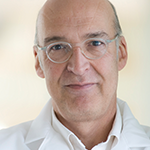 WASHINGTON, D.C.—The workforce shortage in rheumatology is a looming crisis that demands immediate attention. The ACR’s 2015 Workforce Study projected that by 2030, the supply of adult rheumatologists would dwindle by 31%, in contrast to the increase in demand by close to 138%.1 The situation is even worse for pediatric rheumatology and in rural and remote areas. Without interventions to mitigate this shortage, patient outcomes and access to care are at risk.
WASHINGTON, D.C.—The workforce shortage in rheumatology is a looming crisis that demands immediate attention. The ACR’s 2015 Workforce Study projected that by 2030, the supply of adult rheumatologists would dwindle by 31%, in contrast to the increase in demand by close to 138%.1 The situation is even worse for pediatric rheumatology and in rural and remote areas. Without interventions to mitigate this shortage, patient outcomes and access to care are at risk.
Kicked off by Vivekanand Tiwari, MBBS, a rheumatologist at Dartmouth Hitchcock Medical Center, Lebanon, N.H., and an assistant professor of medicine at Geisel School of Medicine, and with a panel discussion moderated by Daniel F. Battafarano, DO, a rheumatologist in San Antonio, Texas, this session, Tackling Workforce Shortages in Rheumatology, was “Born out of a deep concern for the well-being of the rheumatology workforce and the quality of care we provide to our patients.” The session brought together experts and rheumatology practitioners to identify the causes of burnout, share effective coping strategies and explore solutions to mitigate the workforce shortage.
Burnout

Dr. Calabrese
“Rheumatology has a manpower problem,” said Leonard H. Calabrese, DO, vice chair of the Cleveland Clinic’s Department of Rheumatic and Immunologic Diseases and director of the Cleveland Clinic’s RJ Fasenmyer Center for Clinical Immunology, Cleveland, and the session’s first speaker. He addressed the impact of burnout on the rheumatology workforce.
“Burnout is a poison to every element in the workforce equation—[sustaining, training and recruiting],” Dr. Calabrese said. “Burnout is a term of an occupational syndrome; it is not unique to medicine. … However, burnout in medicine has some primacy because it has an impact on the health and well-being of the population.”
Defining burnout, Dr. Calabrese said it has three components: emotional exhaustion, depersonalization and a low sense of accomplishment. “There’s an impulse to equate burnout with mental illness, but burnout is not equivalent to mental illness.
“What are the drivers of burnout? It has a personal element. … There’s also a systemic element,” he said, then addressed work-life balance, the transactional imbalance driven by the need to see more patients in less time (i.e., loss of autonomy) and the moral injury imposed by that imbalance.
Data on burnout in rheumatology do exist. Dr. Calabrese specifically mentioned two studies.2,3 A 2020 study found that 51% of attendees of a continuing medical education meeting met at least one domain of the Maslach Burnout Inventory, with dissatisfaction, lack of exercise and work hours as contributing factors. A 2023 study revealed that more than one-third (38.5%) of postgraduate year (PGY) 4 and 16.7% of PGY 5/6 fellows reported at least one symptom of burnout.”



